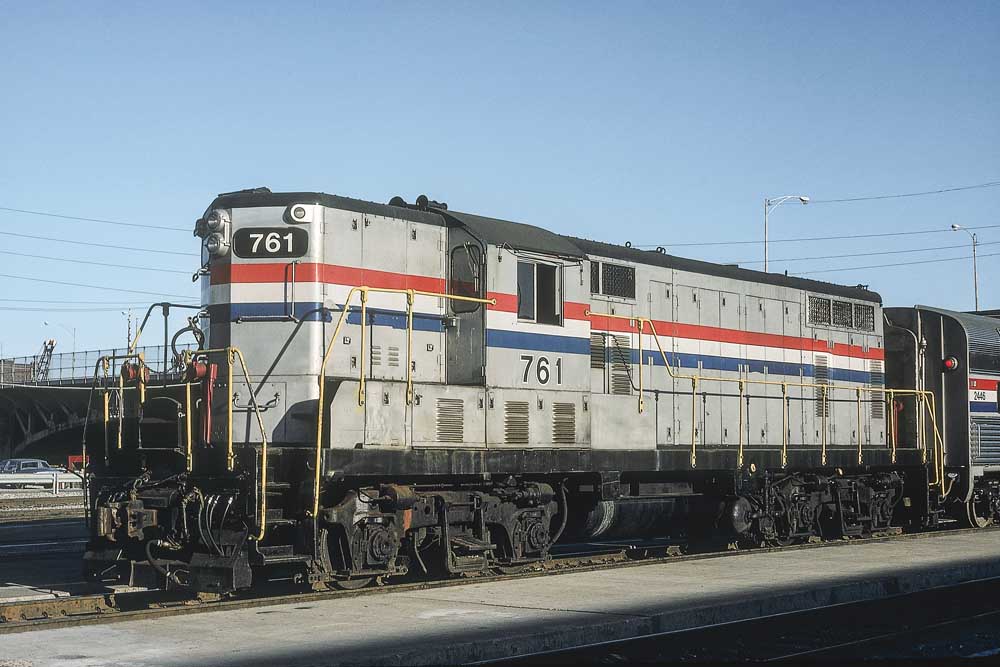Amtrak GP7 diesel locomotives served for decades in supporting roles for America’s passenger carrier throughout its network.

Electro-Motive Division produced the 1,500-hp, four-axle GP7 from 1946 through 1958, making a total of 2,729 units, including five cabless B units, for more than 40 railroads. By the time Amtrak needed more support motive power in the late 1970s, the GP7 had fallen out of favor with its original purchasers and was plentiful on the secondary market.
Amtrak rostered 26 GP7 locomotives for maintenance-of-way and switching service. They carried Nos. 760-785. A majority were acquired through dealer Precision National in March 1978. This acquisition came less than two years after Amtrak acquired the Northeast Corridor infrastructure and became directly responsible for its maintenance and improvement. They were built for Chicago & Eastern Illinois; Chicago & North Western; St. Louis-San Francisco; Louisville & Nashville; Nashville, Chattanooga & St. Louis; Quebec North Shore & Labrador; Rock Island; Union Pacific; and Wabash between 1950 and 1957.
The units served Amtrak in a variety of paint schemes. Those include solid maintenance-of-way orange, three-stripe “phase 3,” a variation of the large “phase 1” “pointless arrow,” and plain platinum mist-and-black.
They often appeared as terminal switchers, especially at Chicago Union Station where visiting railfans would photograph them from the famous Roosevelt Road overpass. But they are perhaps best remembered in maintenance-of-way service on the Northeast Corridor wearing bright safety orange paint, often pulling matching orange cabooses. They would also be called upon as rescue engines when an electric locomotive, or the larger electric supply infrastructure, would become disabled.
Retirements started in the early 1990s. The last purge ran throughout 2005 with the last units coming off the roster in September of that year. Today, a mix of General Electric P32-8BWH and EMD GP15, GP38-3, and MP15 units share the same duties.













